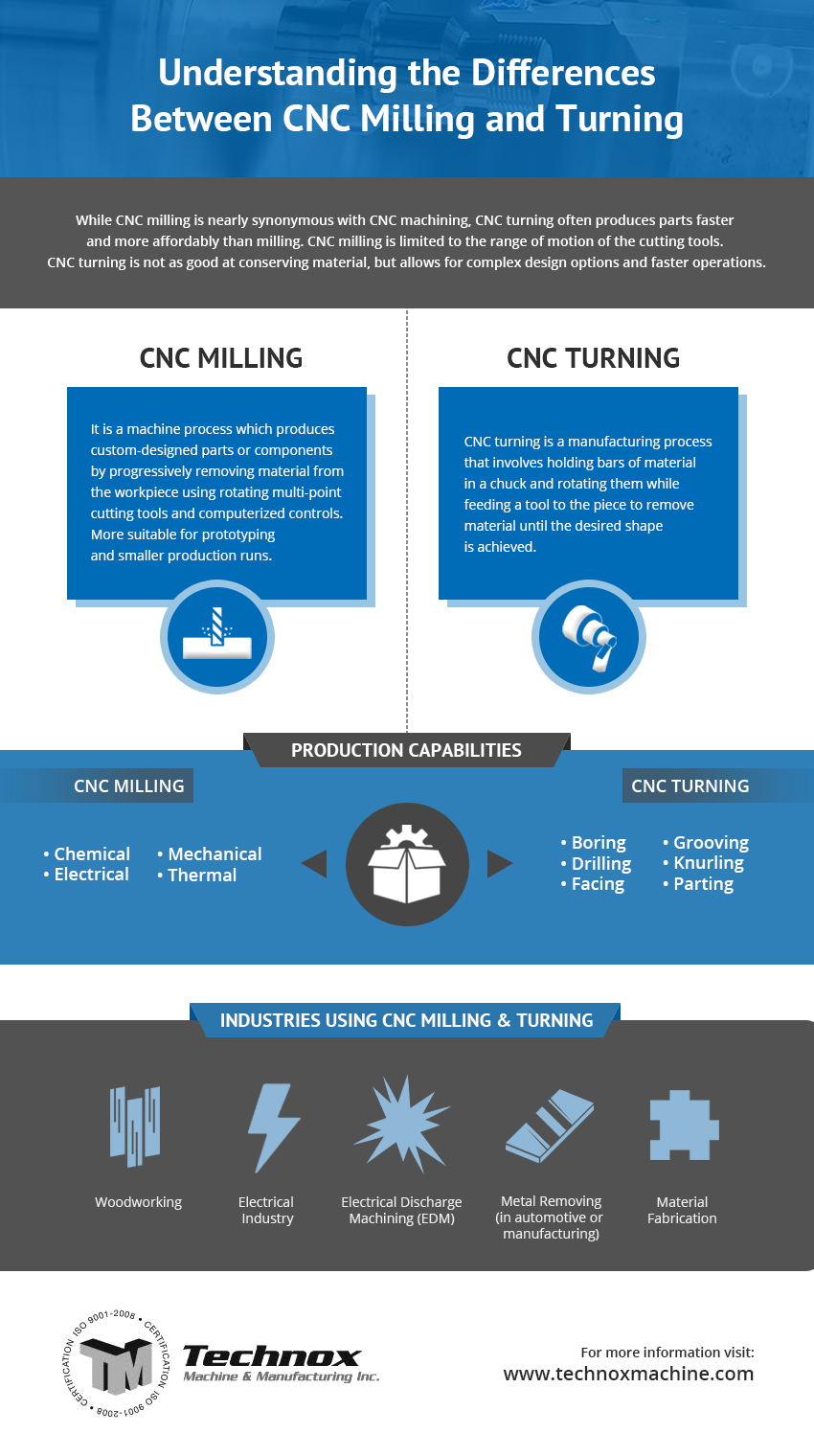Computer Numerical Control (CNC) technology has dominated the metal forming industry in recent years, as it offers advanced precision and repeatability that can be impossible to achieve with manual processes alone. With so many CNC technologies on the market, it can be difficult to distinguish between them and what they are used for. While there are many similarities between CNC milling and turning, there are also distinct, important differences.
Understanding the Differences Between CNC Milling and Turning
While CNC milling is nearly synonymous with CNC machining, CNC turning often produces parts faster and more affordably than milling. CNC milling is limited to the range of motion of the cutting tools. CNC turning is not as good at conserving material but allows for complex design options and faster operations.

CNC Milling
CNC milling is a mechanical process that produces custom-designed parts or components by progressively removing material from the workpiece using rotating multi-point cutting tools and computerized controls. These systems usually have three linear degrees of freedom. They can move freely around the X, Y, and Z axes while the workpiece remains stationary. This limited dimensional operation reduces the speed of operations, making milling more suitable for prototyping and smaller production runs.
CNC Turning
CNC turning is a manufacturing process that involves holding bars of material in a chuck and rotating them while feeding a tool to the piece to remove material until the desired shape is achieved. As the desired shape is achieved through the removal of material, it is also known as subtraction machining.
All of the work can be completed from one side if the CNC turning center has only one turret, but some turning centers have a main spindle and sub-spindle for even faster operation. With this configuration, the main spindle partially machines the workpiece, which is then moved to the sub-spindle to complete the job on the other side of the part. The speed of CNC turning operations makes it an ideal process for large production runs with short lead times.
CNC Milling and Turning: Applications and Types of Materials
Production Capabilities
The production capabilities of CNC milling include a range of processes, such as:
- Chemical
- Electrical
- Mechanical
- Thermal
CNC mills provide superior material conservation efficiency, which leads to a reduction in material costs over the machine’s lifespan. CNC mills fabricate products such as complex short-run production parts, precision components and parts, and prototype parts.
CNC turning lathes, on the other hand, are used to conduct operations such as:
- Boring
- Drilling
- Facing
- Grooving
- Knurling
- Parting
CNC milling and turning are used in a number of industries, including:
- Woodworking
- Electrical industry
- Electrical discharge machining (EDM)
- Metal removing (in automotive or manufacturing)
- Material fabrication
CNC Machining Services from FacFox
Machining services such as CNC milling and CNC turning provide multiple options for the precise fabrication of components and parts. Each method has its pros and cons, making them ideal for different applications.
Technox operates one of the largest machine shops in the larger Chicago area. We possess capabilities to handle oversized parts and a range of value-added services that make us a single-source supplier for nearly any project. We can handle prototyping, large production runs, and everything in between.
For more information on the differences between CNC milling and turning or to inquire about our other services, please contact us at info@facfox.com or request a quote.